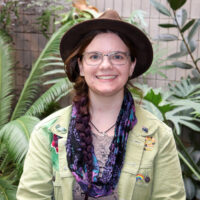
Revealing the Occurrence and Diversity of Polyphosphate Accumulating Organisms (PAOs) Communities Across Maize Genotypes and Growth Stages
Phosphate (P) is an essential mineral nutrient for plants and key in modern fertilizer. Fertilizer use is necessary to maintain current agriculture production, but increasing demand and overapplication has caused soil and water degradation. Global mineral P stores are expected to be depleted within the next 100 years, necessitating the need for sustainable alternative P utilization. One potential solution is the use of microorganisms capable of cycling P. Polyphosphate (polyP) is an inorganic biomolecule used in energy production and signaling processes produced from bioavailable orthophosphate (OrthoP). PolyP accumulating organisms (PAOs) store polyP during aerobic respiration and release orthoP from the breakdown of polyP in the production of ATP during anaerobic respiration. PAOs could be used as a sustainable fertilizer alternative as plant-microbe interactions facilitate P uptake in plants. The microbes specific to a plant are found in a region of soil known as the rhizosphere, in which the bacterial composition varies based on genetic differences in crops. As plants enrich key functional microbes, it is expected that various maize genotypes will display a variation in the distribution and abundance of PAOs within the rhizosphere. This can be quantified and analyzed using fluorescence activated cell sorting (FACS) to phenotypically quantify bacteria cells of interest for quantification and downstream genomic analysis. This experiment is still ongoing, and results will be novel as no studies thus far have examined the role, abundance, and variation of PAOs across maize genotypes.
From my time at Cornell, I gained a greater understanding of the various disciplines in the broad field of plant sciences and have observed how research fields that seem unrelated can tie back into crop research. I spent a significant amount of time in-lab practicing skills such as pipetting and operating laboratory machinery that I can use in any lab I go to across the globe. Additionally, I worked alongside other students in my position in the lab, enabling me to practice scientific team work, a skill I don’t think many researchers get enough training in. Outside of the lab, the program provided several events teaching us about other labs and what it is like to have a career in research. I found it especially useful to learn how to apply for a PhD as I did not know how vastly different the process was from even department to department.
